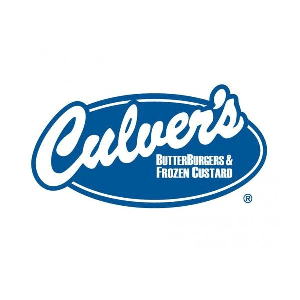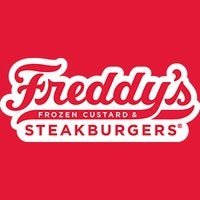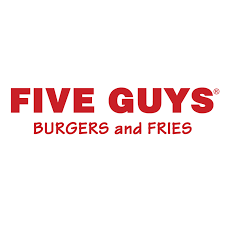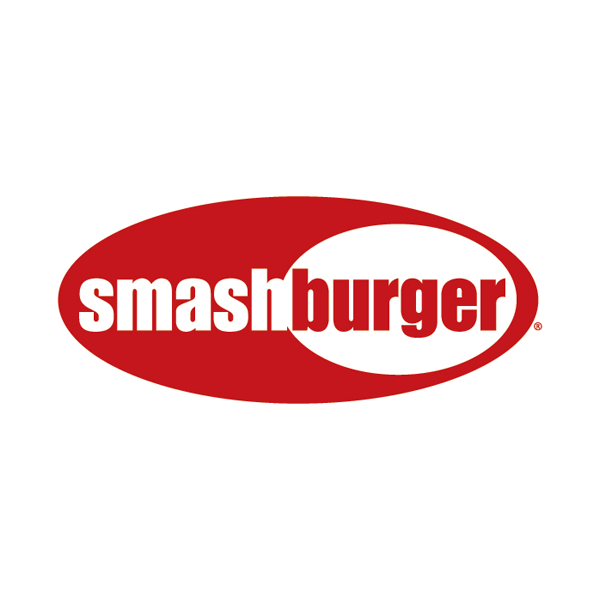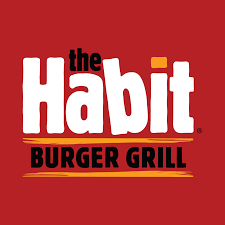Culver’s Franchise in 2025: Costs, Fee & FDD
Explore the financial landscape of owning a Culver’s franchise, from initial costs to potential earnings. Learn about key metrics, including franchise fees, growth opportunities, and ongoing operational expenses, to make an informed investment decision.
Table of Contents:
Culver’s is a beloved American fast-casual franchise that has carved out a unique niche in the restaurant industry since its founding in 1984 by Craig Culver and Lea Culver, along with Craig’s parents, George and Ruth. The first Culver’s restaurant was born in Sauk City, Wisconsin, with a vision to bring the flavors of traditional Midwest comfort food to a broader audience. Known for its friendly service and welcoming atmosphere, Culver’s quickly became a staple in the communities it serves, emphasizing a family-friendly dining experience that keeps customers coming back for more.
At the heart of Culver’s menu is its signature ButterBurger, a juicy, Midwest-inspired burger that is seared to perfection and topped with a lightly buttered, toasted bun. This, along with their creamy, fresh-made Frozen Custard, are the cornerstones of the brand. Beyond these core offerings, Culver’s provides a diverse range of menu items, including chicken sandwiches, salads, and seafood dishes, catering to a wide array of tastes. The brand prides itself on quality ingredients and a menu that appeals to both families and individuals seeking a satisfying, quick meal.
Today, Culver’s has grown significantly from its humble beginnings. The franchise boasts over 850 locations across 25 states, predominantly in the Midwest and Southern U.S., but it’s slowly expanding its footprint nationally. The chain serves millions of customers annually, with a loyal base that values consistency, quality, and a welcoming environment. Culver’s has managed to maintain a strong presence in the fast-casual segment, becoming a go-to option for those seeking a blend of fast service and hearty, made-to-order meals. This growth is a testament to the strength of the Culver franchising system, which offers franchise opportunities to those looking to be part of a successful and established brand.
Culver’s franchisees benefit from a comprehensive support system that includes in-depth training programs, ongoing operational support, and a well-established brand reputation. New franchisees undergo a detailed training program covering all aspects of the business, from day-to-day operations to customer service excellence. Additionally, Culver’s offers marketing support, including national and regional advertising campaigns, as well as guidance on local community engagement, which is a key aspect of the brand’s strategy. This robust support framework is designed to help franchisees succeed and grow within the competitive restaurant industry.
Culver’s Franchise Insights
- The franchise has seen steady growth, expanding from its first location in 1984 to over 850 locations by 2024, with an average of 40 new locations opening each year in the last decade.
- While the majority of Culver’s locations are concentrated in the Midwest, the brand is expanding into new markets, including the Southeast and Southwest, offering new growth opportunities for franchisees.
- Culver’s is deeply committed to community involvement, with many franchisees participating in local fundraising and charity events, helping to build strong ties and a positive brand reputation in their communities.
Culver’s Franchise Key indicators
Unit Growth YOY (%)
6%
vs industry 1%
Total U.S. Franchised Units
937
3-Year Failure Rate
1%
vs industry 11%
Sales-to-Investment ratio
0.7:1
How much does it cost to open a Culver’s franchise?
Understanding the potential investment size and capital requirements is crucial when considering opening a Culver’s franchise. Culver’s franchise cost, including initial franchise fees, equipment costs, and ongoing operational expenses, impact the feasibility and profitability of the venture. Thoroughly evaluating these factors ensures that potential franchisees are prepared for the financial responsibilities and can make informed decisions about their ability to sustain and grow the business, ultimately contributing to long-term success.
Min & Max Investment
Opening a Culver’s franchise involves several key costs, which are outlined in Item 7 of the Franchise Disclosure Document (FDD). You can see a breakdown of the costs to open a Culver’s below from the most recent Item 7 below:
| Type of Expenditure | Minimum Investment | Maximum Investment |
|---|---|---|
| Initial Franchise Fee | $20,000 | $55,000 |
| Land | $425,000 | $1,500,000 |
| Site Work | $90,000 | $1,465,000 |
| Building | $1,525,000 | $2,616,000 |
| Travel, Living and Expenses during Training | $20,000 | $80,000 |
| Initial Inventory | $50,000 | $65,000 |
| Furniture, Fixtures, Equipment and Supplies | $461,000 | $602,000 |
| Sign Package | $112,000 | $293,000 |
| POS System | $38,500 | $51,000 |
| Miscellaneous Expenses | $20,000 | $40,000 |
| Additional Funds (working capital) - 3 months | $50,000 | $100,000 |
| Total Estimated Initial Investment | $2,811,500 | $6,867,000 |
Item 7 in the Franchise Disclosure Document (FDD) is the “Estimated Initial Investment” section. It outlines the total costs a franchisee can expect to incur when starting a franchise, including the initial franchise fee, equipment, inventory, real estate, and other startup expenses. This section is crucial because it provides potential franchisees with a detailed understanding of the financial commitment required, helping them assess affordability and plan their investment strategy effectively.
Required Capital
For a Culver’s franchise, the required capital, liquid assets, and net worth typically fall within certain ranges, but it’s important to note that these can vary depending on factors like location and specific franchise agreements.
- Required Capital The total investment required to open a Culver’s franchise is generally between $2.81 million and $6.87 million. This includes costs such as real estate, construction, equipment, and initial inventory. Assuming that you will finance your franchise investment, you should plan to have 20% of the total investment amount in the form of equity (cash) for the investment.
- Liquid Assets Franchisees are typically required to have at least $500,000 to $750,000 in liquid assets. This ensures that the franchisee has sufficient cash or easily accessible funds to cover the initial expenses and any unforeseen costs during the start-up phase.
- Net Worth A minimum net worth of around $1.5 million to $2 million is often required. This figure is an estimate based on industry standards for similar franchises and ensures that the franchisee has the overall financial stability to support the business.
These figures are estimates based on industry data and typical franchise requirements, so it’s always a good idea to consult directly with Culver’s or a franchise consultant for the most accurate and up-to-date information.
How much does a Culver’s franchise owner make?
Calculating the salary of a Culver’s franchise owner involves analyzing gross sales to determine total revenue, assessing operational efficiency to understand profit margins, and accounting for franchisor fees and additional expenses such as rent, utilities, and payroll. Effective management of these factors can significantly impact the profitability and financial success of a Culver’s franchise owner. This comprehensive financial analysis helps estimate net profits, from which the owner’s salary can be derived. A clear understanding of these factors ensures accurate salary projections and financial planning for sustainable business operations.
Culver’s Revenue & Gross Sales
Culver’s franchises have a median gross sales of $3,423,068, reflecting growth in recent years. This upward trend highlights the brand’s growing popularity and the potential for strong financial returns for its franchisees.
Which key factors impact the average revenue performance of Culver’s franchisees?
The growth in Culver’s U.S. franchisee gross sales performance can likely be attributed to several key factors. First, Culver’s ongoing commitment to quality and consistency in its core products, such as the ButterBurger and Frozen Custard, has continued to attract and retain loyal customers. Additionally, the brand’s strategic expansion into new markets, particularly in regions where its presence was previously limited, has opened up new customer bases. Enhanced marketing efforts, including national advertising campaigns and community engagement initiatives, have also played a significant role in boosting brand visibility and driving foot traffic to locations. Lastly, the overall economic recovery and increase in consumer spending in the restaurant sector post-pandemic have likely contributed to higher sales figures.
Culver’s Franchise Operational Costs
When opening a Culver’s franchise, several key ongoing operational costs should be considered:
- Labor Costs Employee wages, benefits, and training are significant expenses, as Culver’s locations typically require a full staff to maintain quality service.
- Food and Supply Costs The cost of ingredients, packaging, and other supplies needed to prepare and serve the menu items is a major ongoing expense, especially given Culver’s commitment to using fresh, high-quality ingredients.
- Rent or Mortgage Payments Depending on whether you lease or own the property, monthly payments for your location can be substantial, especially in high-traffic areas.
- Utilities Costs for electricity, gas, water, and waste management can add up, particularly for a restaurant that operates long hours.
- Maintenance and Repairs Regular upkeep of equipment, as well as facility maintenance, is necessary to ensure smooth operations and a pleasant dining environment.
- Insurance Comprehensive insurance coverage, including liability, property, and workers’ compensation, is essential for protecting the business against potential risks.
These costs are critical to budgeting and financial planning when operating a Culver’s franchise.
Culver’s Franchise Fees
Owning a Culver’s franchise is different from owning an independent, non-franchised business. All franchises tend to charge ongoing fees that franchisees are required to pay to operate. Culver’s requires their franchisees to pay the following fees:
- Royalty Fee This is a monthly fee paid to Culver’s, calculated as 4% of the franchise’s gross sales.
- Advertising Fee Franchisees must contribute 2.5% of their gross sales to Culver’s national advertising fund. This fee is also due monthly on or before the 10th day of the following month.
- Cooperative Advertising If a regional advertising co-op is established, franchisees may be required to contribute up to 4% of their gross sales, as determined by a majority vote within the co-op region.
- Additional Training Franchisees may need to pay $1,000 per person for additional training sessions, especially after the initial Franchisee Development Program. This fee is due two weeks before the training begins.
- Additional Fees There may be other fees for technology upgrades, local marketing initiatives, or equipment maintenance, which should also be considered.
These ongoing fees are essential to consider when planning the financial aspects of owning and operating a Culver’s franchise. They cover the costs of brand support, advertising, and ongoing operational assistance provided by Culver’s.
Culver’s Franchise Earnings
Based on the most recent financial data, the Culver’s franchise has median gross sales of approximately $3,423,068. For an owner-operator, this means the estimated earnings are $513,460 based on the franchise and industry levels of profitability. This level of earnings underscores the potential profitability for hands-on franchise owners who are actively involved in the day-to-day operations.
For semi-absentee owners, who may not be as directly involved in the business, the estimated earnings are slightly lower due to the need to hire management support. This data suggests that even with a more hands-off approach, Culver’s franchises can still provide a solid return on investment, making it an attractive option for different types of investors.
How to Open a Culver’s Franchise
Becoming a Culver’s franchisee involves several key steps, starting from the initial inquiry to the opening of your restaurant. Here’s an overview of the process:
- Initial Inquiry You or your franchise specialist submits an initial inquiry basic information about your interest and background. You should also conduct thorough research on the franchise, including seeing all of the information available on the Vetted Biz franchise intelligence platform, including access to the most recent Franchise Disclosure Document (FDD).
- Franchise Application After the initial inquiry, you’ll receive a Franchise Disclosure Document (FDD) that outlines all the details about the franchise, including financial obligations, operational support, and more. You’ll need to complete and submit a formal application, which Culver’s will review to assess your fit as a potential franchisee.
- Discovery Day If your application is approved, you’ll be invited to a Discovery Day at Culver’s headquarters. This is an opportunity to meet the corporate team, learn more about the brand, and ask any questions you may have. It’s also a chance for Culver’s to evaluate you as a prospective franchisee.
- Franchise Agreement Upon mutual agreement, you’ll sign the franchise agreement, which formalizes your commitment to opening a Culver’s location. This agreement includes details on your rights and obligations as a franchisee, as well as the support you’ll receive from the franchisor.
- Training Program Before opening your restaurant, you’ll undergo a comprehensive 16-week training program that covers all aspects of running a Culver’s franchise, from operational procedures to customer service and marketing strategies.
- Site Selection and Development With guidance from Culver’s, you’ll select an appropriate location for your restaurant. This involves market research, site analysis, and lease or purchase negotiations. Once the site is secured, you’ll work on developing the restaurant, including design, construction, and setting up equipment.
- Grand Opening and Operations After completing the necessary preparations and receiving final approval, you’ll open your Culver’s restaurant to the public. Culver’s provides ongoing support to ensure a successful launch and continued operations, including marketing assistance, operational guidance, and regular performance reviews.
Pros & Cons
Pros
Strong Brand Reputation: Culver’s has a loyal customer base and a well-established reputation for quality, especially in the Midwest. This can drive steady foot traffic and sales.
High Median Gross Sales: With a median gross sales figure of in excess of $3.4mm, Culver’s franchises can generate substantial revenue, offering a solid return on investment for owner-operators.
Diverse Menu Offerings: The menu caters to a broad audience with a variety of options, including the popular ButterBurger and Frozen Custard, which helps attract a wide customer base.
Community Focus: Culver’s encourages franchisees to engage with their local communities, which can strengthen customer loyalty and brand presence in the area.
Cons
High Initial Investment: The total investment required to open a Culver’s franchise can range from $2.81 million to $6.87 million, which might be a significant barrier for some potential franchisees.
Limited Geographic Reach: While expanding, Culver’s is still more concentrated in the Midwest and South, which could limit market opportunities in certain regions.
Operational Demands: Running a Culver’s franchise requires a hands-on approach, particularly if you’re aiming for the higher owner-operator earnings, which may not suit everyone.
Market Saturation Risk: In some regions, the brand’s expansion could lead to market saturation, potentially limiting growth opportunities for new franchisees.

